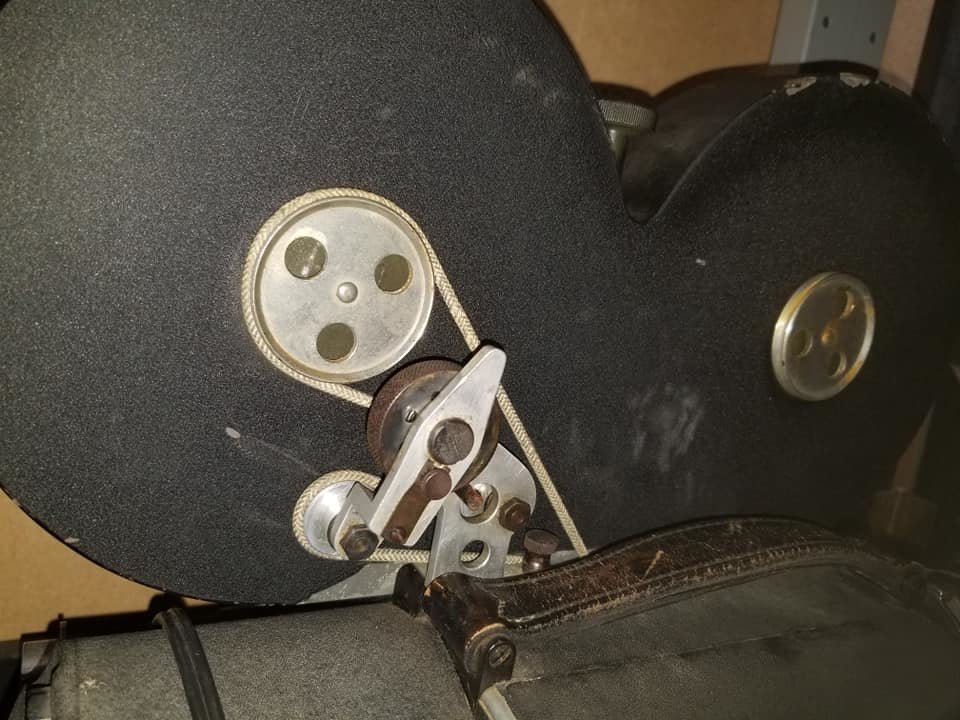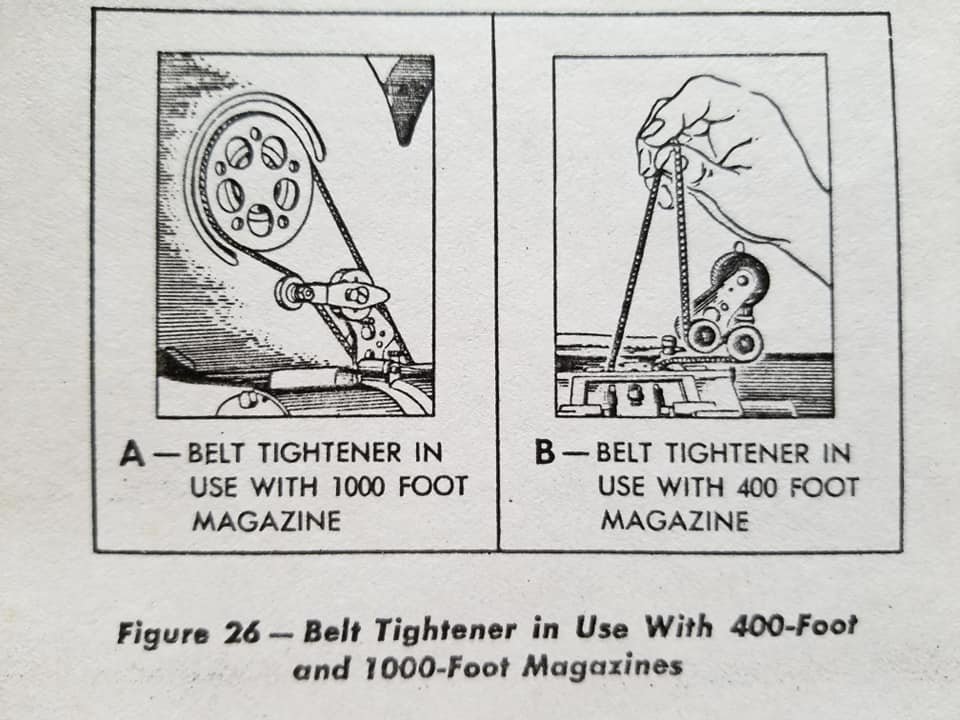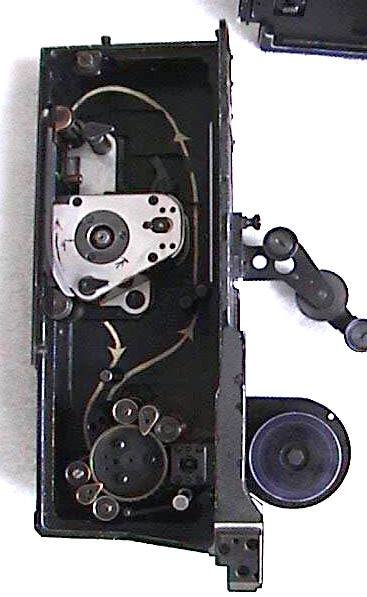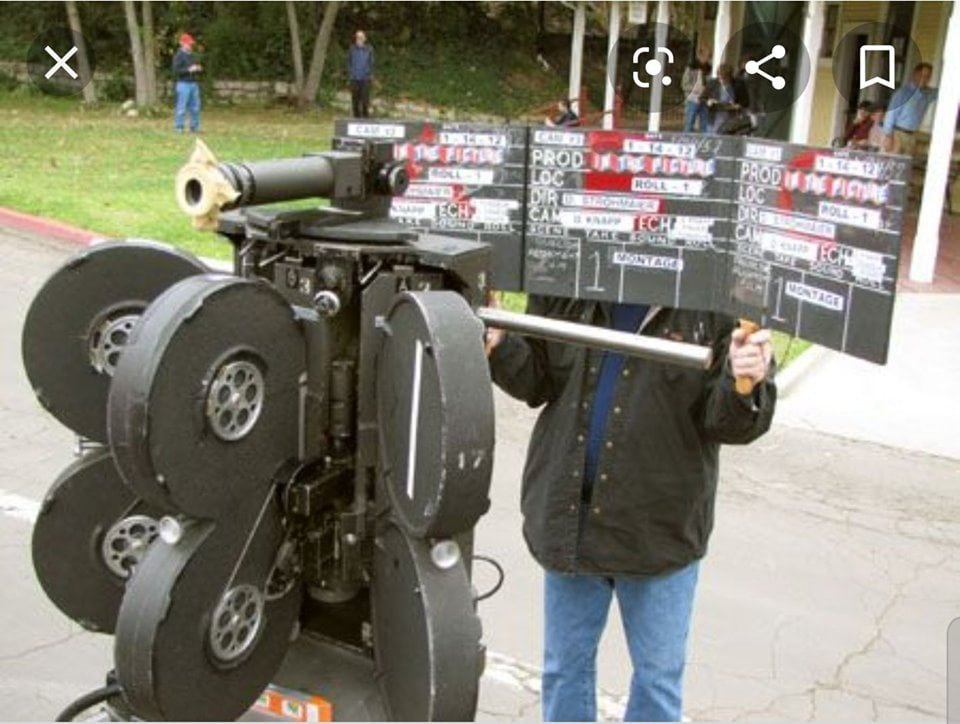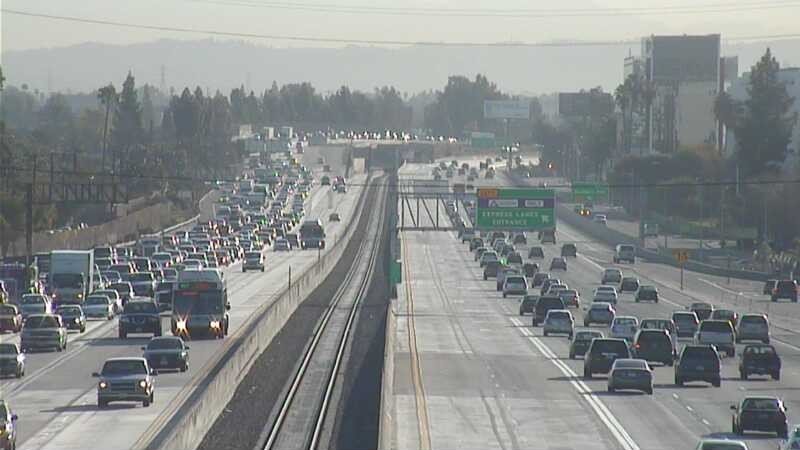-
Posts
231 -
Joined
-
Last visited
Everything posted by Webster Colcord
-
Thanks so much for your insights, Gregory. Caught the film this weekend, loved it. Here's a link to Todd Phillips doing a breakdown of the opening sequence. Really cool to hear that they shot the titles on an animation stand, on film, then composited them in: Todd Phillips breaks down opening sequence of "Joker"
- 83 replies
-
- robert de niro
- dc films
- (and 8 more)
-
I think it should be mentioned that because of tax incentives, Boston (along with Atlanta, New Orleans) has been a major shooting destination for a lot of movies over the past 10 years or so. Sometimes it's easier to break-in to the industry in cities/states like that where productions don't want to bring in crew from California. I spent a good chunk of time on-set in Boston for the Ted movies. Some great crew out there!
-
This is kind of an odd question to be asking here, as it's more of a pure compositing thing vs. a cinematography thing. Nevertheless... Here's my cel animation reel, which is comprised of a few commercial/PSA pieces and some stuff done mostly for fun. I used to animate on paper and shoot it directly on film. Now I animate on paper, erase the backgrounds in Photoshop, and comp in AE: Webster Colcord 2018 Cel Animation Reel What you're looking at with the great Cuphead stuff is just compositing tricks (but done in a game engine) to emulate the artifacts of actually shooting real animation cels. It looks to me like they are blurring the character layer slightly and multiplying that on top by 30% or so, and I think there's a chromatic aberration added which you would see with old lenses - if you look carefully at the black lines against a light background, they seem to have a bit of a chromatic aberration fringe. Then there's a subtle lens vignetting, and an added grain pass over everything to marry it together (I'm not sure about the grain pass, but in-game they definitely have a scratchy/blotchy film pass on top of everything). Also in old cartoons there is often a slight shadow from the cels onto the bg, and they may be adding a sort of drop shadow to emulate that. In the creation of actual cel animation in the old days, you would have some of the same issues with trying to marry the look of clean, flat colors on plastic cels over watercolor/guache backgrounds. That's why a lot of it comes down to the art itself - the shadows that are painted into the characters, the animated cast shadows, the motion lines. They would sometimes use rouge drybrushed on top of the cels for blushing cheeks. Uli Meyer is sometimes active on this site, he's a cel animation master and might have a better answer than I. - Webster
-
Interesting little accessory that tightens the take-up belt, lets it work with either a 1000ft or 400ft mag.
-
Thanks for your concern Frank. I did put about three drops of machine oil in each of those little ports just before running it. Maybe I didn't put enough, or maybe it just needs time to work thru. I will read the manual to see how many drops of oil to use. Maybe the movement itself needs a little grease. I have noticed that Steve Krams seems to be the ONLY dealer out there who stocks any Wall Cameras/accessories, though years ago I believe Joe Lewis or Ken Stone had a few. Currently the one in my video has a take-up belt for a 1000-ft mag (with a little friction arm to adjust the tension) but I'm probably going to replace that with a leather cord for the 400ft mag. Or maybe I'll just use it with the crazy big 1000ft mag! Here's a little article I found online about the original J.M. Wall shop in Syracuse: J.M. Wall Machine Co. building in Syracuse, NY
-
On another note, Roy H Wagner ASC mentioned on Facebook that the original Cinerama camera utilized three Wall camera movements. And Mark Gulbrandsen posted a photo of one of the film chambers.
-
My friend in Seattle passed away last year and I ended up inheriting his two J.M.Wall cameras. Here's a video of the nicer of the two cameras, which has its original set of Baltar lenses, running off a 24V Lithium ion tool battery after giving it a little oil. I have to replace the take-up belt, make a new rackover handle, cover the optical sound port on the rear, and then I plan on shooting a test roll. I also have to switch the lenses around because the long lens ends up in the field of view of the 25mm Baltar. J.M. Wall camera running on 24V DC
-

AATON 35III Single Frame / Stop Motion issue with split frames
Webster Colcord replied to Robino Jones's topic in Aaton
This was the case with an Arri 2B that I purchased decades ago; it had been used for stop-motion when I got it and came with a sophisticated Norris capping shutter. But I'm told you can make a poor man's version by using just a little flap of cardboard - lift it up when you're taking the frame, put it down between frames. -

Phil Tippett interview, Bolex + Auricon
Webster Colcord replied to Webster Colcord's topic in Please Critique My Work
Thanks Dom! Sorry about the link, here's a better one (I will try to edit the original posting): Mad God on demand Yeah, work was slow over the last year so I helped out a lot with the final push to get a new installment of Mad God completed. It's still in post-production, and there's a feature-length compilation of all the parts that is going to come out next year. We did a lot of fun stuff: stop-motion, slow motion miniatures, full-size sets, live action, pyro. Super fun (and sometimes dangerous!) to work on. Phil mostly shoots with a Red camera that he purchased a couple of years ago. When you're actually building, setting up and shooting you don't have time to document things properly. So this mini-documentary was my attempt to capture the tail end of that working experience. -

Phil Tippett interview, Bolex + Auricon
Webster Colcord replied to Webster Colcord's topic in Please Critique My Work
Thanks guys! -
Here's a little interview film that I made about my boss, VFX artist Phil Tippett, as he completes his personal film project "Mad God" (http://watch.madgodmovie.com/). The distributor is going to include this on the disc release so I am only sharing this link here. I pre-recorded and edited the dialogue digitally, then shot the optical sound in an Auricon CM-72 camera, then re-shot the images on the same film in a spring-wind H16 Bolex. Lenses were a 10mm and 25mm Switar. I was originally going to cut all in-camera, but I ended up doing some re-ordering of shots in the edit. The sound is a mixture of the original digital recording and the optical sound. Since the camera didn't have a sync motor, I ended up having to chop up the digital audio at any pause in the voice track to re-establish sync. private vimeo link
-
Greg, You're narrowing the shutter to get motion blur that would normally be associated with the faster frame rate, correct? I'm surprised that you would go as far as 90 degrees since you're only slowing down the camera speed by 2 frames, but perhaps with trial-and-error that's what looked best? Also, years ago a colleague who worked on the Fast N Furious movies told me that in the driving scenes, the cars are only going 40mph because of safety rules. Is that true? You guys must shoot a lot of undercranked scenes! - Webster
-

How was film put on VHS back in the day?
Webster Colcord replied to Daniel D. Teoli Jr.'s topic in Post Production
The workflow could be somewhat more complex than this for shows that were shot on film but didn't go thru a film finish; i.e. your typical commercial, music video, industrial film, or tv show. If there was significant editing to do (in the linear editing era, or before NLE could take you to final) there would be an offline edit done in advance and an online conform session. It was all very complicated and expensive. -

Schneider 28mm f2 Xenon Arri standard mount coverage
Webster Colcord replied to Clive Alex's topic in 35mm
-

Schneider 28mm f2 Xenon Arri standard mount coverage
Webster Colcord replied to Clive Alex's topic in 35mm
I just picked up one of these 28mm Schneider's for my Arri IIB, the lens is a bit beat up but the glass is good and looks great thru the viewfinder. One thing I had forgotten about the Arri standard mount; (like a C-mount lens) you can disengage the lens locks and you have a built-in adjustable extension tube for macro work. -

Terminator 2: Judgement Day, Opening Scene
Webster Colcord replied to Olle Knutson's topic in General Discussion
Is it a chunk of the 10 freeway heading West? I haven't lived down there since 2015, but it looks kinda familiar... -
There's also a company that released a DVD set years ago that's all about blocking actors and camera angles, how to deal with complex staging issues, all that... it was sort of meant for previs artists (one of the previs companies I worked at had the set) and it's really dry and boring, but full of good info. It won't help so much with the lingo that you need to know - terms like "cowboy", "dirty over", "banana" - the "Movie Speak" book is better for that. https://www.hollywoodcamerawork.com/
-

Shooting double exposures on an Arri 416
Webster Colcord replied to John-Erling Holmenes Fredriksen's topic in 16mm
What were the stocks used? -
If you're working on a set, you need to know the lingo for the various shot possibilities. There's a lot of short-hand terminology for various kinds of shots, set-ups, and even for blocking. Unfortunately they don't teach much of this in film school, you have to be on set to learn it. This is a great book that covers a lot of it: Movie Speak on Amazon
-
I couldn't find anyone to commit to it in time. I am told that after WWII, manufactures were looking for other things to build with aluminum and the photo and film business benefited from that. The attachments to the columns were giant pieces of cast aluminum. In my opinion, it was overbuilt and I don't feel too bad about scrapping it, because it just would have become someone else' burden down the road. If I'm not mistaken, animation stands by other manufacturers, like the Acme and Forox, were more streamlined than the Oxberry. We saved the camera, the focus cams, the platen, the electronic control system and other items, and those are going to a group in Vancouver BC who are missing some pieces for their Oxberry. The columns, base, camera arm, and platen x/y mover went to the scrapyard.
-

Shooting double exposures on an Arri 416
Webster Colcord replied to John-Erling Holmenes Fredriksen's topic in 16mm
Very nice! Love the double exposures. Curious - your image looks wider than Super 16, but it also doesn't look cropped top and bottom. Plus the flares - what were the anamorphics that you shot with? -
The Minolta XL401 is a little S8 camera with a lot of features and a good lens. I think you can pick them up on Ebay for around $50
-
I couldn't agree more with what Tyler said. For an "extra camera" at a fashion shoot, a Bolex is a great way to start (as long as you don't overpay for your system). Also - it shouldn't matter but it does - while we all want to be seen with modern, slick-looking gear on-set, the Bolex is familiar to people and has a quaint cache. You (probably) won't be the laughed at for being seen with it.
-

Are there any gold rules for editing?
Webster Colcord replied to Daniel D. Teoli Jr.'s topic in Post Production
I agree with what Bruce says. In addition there are established known cutting techniques. Matching action exactly between shots and cutting in the middle of a motion, like a door swinging open, can often result in the action feeling like a "double cut". Sometimes double-cuts are intentional, but the rule for an action like a door opening is to cut right after the beginning or end of the motion in either shot. There's also a lot of ideas about establishing the relationships in a space, like a dialogue scene in a room, and whether it's better to obey the geometry of the objects in the physical space, or (more likely) for the editor to "come in cold" and not necessarily restrict themselves to the logic of the actual set. Of course, a good director can make the editor's job easy in that regard.



